目: 天門冬目 Asparagales
科: 獨尾草科 Asphodelaceae(獨尾草科也被稱為日光蘭科、蘆薈科或阿福花科)
獨尾草科 Asphodelaceae
http://zh.wikipedia.org/wiki/%E7%8B%AC% ... 9%E7%A7%91
屬: 蘆薈屬 Aloe
C. A. Mey.
http://zh.wikipedia.org/wiki/%E8%98%86%E8%96%88
蘆薈屬(學名:Aloe)通稱蘆薈,原產於地中海、非洲,為獨尾草科多年生草本植物,據考證的野生蘆薈品種300多種,主要分佈於非洲等地。這種植物頗受大眾喜愛,主要因其易於栽種,為花葉兼備的觀賞植物。可食用的品種只有六種(臺灣只核準5種),而當中具有藥用價值的蘆薈品種主要有:
庫拉索蘆薈,分佈於非洲北部、西印度群島,又名洋蘆薈、巴貝多蘆薈或翠葉蘆薈 --Aloe_vera--舊名Aloe_barbadensis,好望角蘆薈,分佈於非洲南部 ,元江蘆薈(雲南)等
http://zh.wikipedia.org/zh-tw/%E5%BA%AB ... 6%E8%96%88
摘錄
俗稱藥用蘆薈,是可能源自於北非的一種多肉植物。它們在乾旱的氣候下生長,廣泛分佈在非洲及其他乾旱地區。它們有作為草藥,也有很多其用途的研究,但有時卻有所矛盾。[1][2][3][4]雖然如此,但仍有一些初步證據證明它們的抽取物可以幫助治療糖尿病及高血脂肪。[3]這種效用是因其含有多糖、甘露聚糖、蒽醌及凝集素。[3][5][6]
蘆薈的葉片中含有超過二百種化合物,當中包括有20種礦物質、18種胺基酸、12種維生素及其他各種不同的養分[1],包括多種黏多醣、脂肪酸、蒽醌類及黃酮類化合物、糖、活性酶等。蒽醌類又名安特拉歸農綜合體(Anthraquinone complex),有消毒殺菌的功效,主要存在於汁液裡。不過,蘆薈的表皮含有大黃素,可以令服用者腹瀉,及令孕婦流產,因此蘆薈必須去皮食用。
http://en.wikipedia.org/wiki/Aloe
摘錄
Most Aloe species have a rosette of large, thick, fleshy leaves. The leaves are often lance-shaped with a sharp apex and a spiny margin. Aloe flowers are tubular, frequently yellow, pink or red and are borne on densely clustered, simple or branched leafless stems.
Many species of Aloe appear to be stemless, with the rosette growing directly at ground level; other varieties may have a branched or unbranched stem from which the fleshy leaves spring. They vary in colour from grey to bright-green and are sometimes striped or mottled. Some Aloes native to South Africa are arborescent. [1]
Succulent plant
http://en.wikipedia.org/wiki/Succulent_plant
Succulent plant,such as this Aloe, store water in their enlarged fleshy leaves, stems, or roots, as shown in this split aloe leaf. This allows them to survive in arid environments.
http://en.wikipedia.org/wiki/File:Split_Aloe.jpg

List of Aloe species
http://en.wikipedia.org/wiki/List_of_sp ... genus_Aloe
Aloe_vera--翠葉蘆薈 舊名--Aloe_barbadensis
---used in healthcare & health products
http://en.wikipedia.org/wiki/Aloe_barbadensis
http://en.wikipedia.org/wiki/Aloe_vera
http://en.wikipedia.org/wiki/File:Echte ... n_oben.JPG
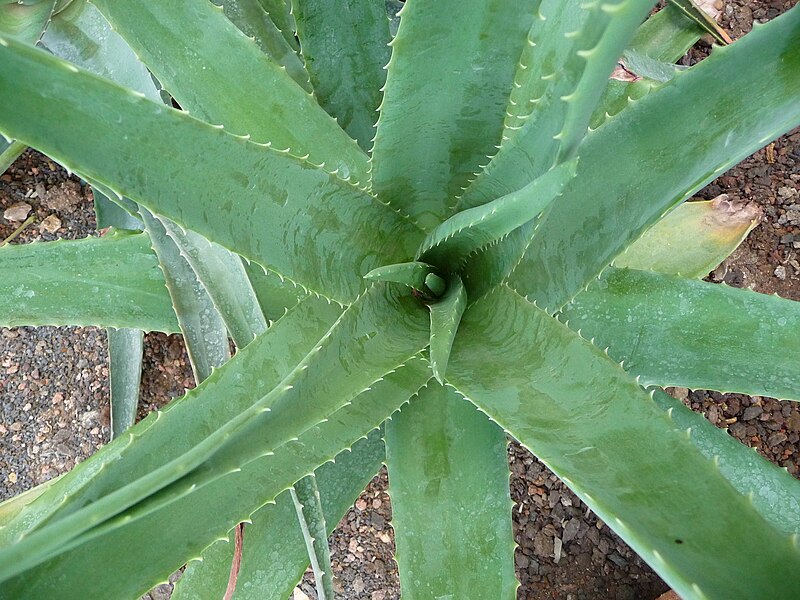
Aloe fields
http://en.wikipedia.org/wiki/File:Aloe_fields.jpg

Aloe vera plant with flower detail inset.
http://en.wikipedia.org/wiki/File:Aloe_ ... _inset.png
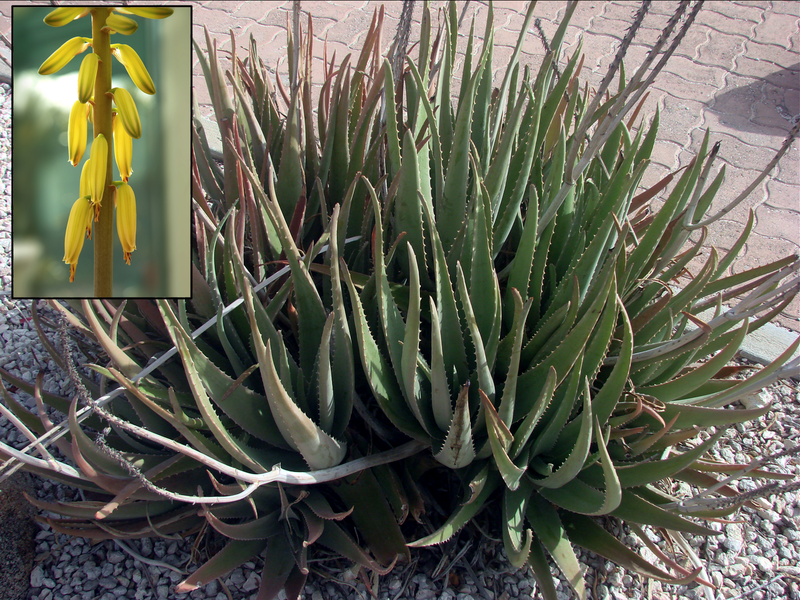
Spotted forms of Aloe vera are sometimes known as Aloe vera var. chinensis.
http://en.wikipedia.org/wiki/File:Aloe_Vera.jpg

http://en.wikipedia.org/wiki/File:Aloe_vera_A.jpg

Aloe vera gel being used to make a dessert.
http://en.wikipedia.org/wiki/File:Aloe_vera_gel.jpg

Aloe ferox
好望角蘆薈,分佈於非洲南部
http://en.wikipedia.org/wiki/Aloe_ferox
摘錄
Aloe ferox, also known as Cape Aloe,[1][2] Bitter Aloe,[1][3] Red Aloe[3] and Tap Aloe,[1] is a species of aloe indigenous to South Africa's Western Cape, Eastern Cape, Free State, KwaZulu-Natal, and Lesotho.[2][4]
Medicinal uses
It"s leaves contain two juices; the yellow bitter sap is used as a laxative, and the white aloe gel is used in health drinks and skin care products. The sap is toxic to pregnant and breast feeding mothers. [2]
The home remedies with Aloe ferox is same as that of with Aloe vera.
Cuts, wounds, burns, pimples and skin problems: apply the sap over the affected parts.
Spleen disorders: intake a table spoon gel with a pinch of turmeric, twice a day, one hour after food.
Indigestion, cancer, HIV/AIDS: intake a table spoon of fresh gel, twice a day, one hour after food.
Constipation: mix the spoonful of gel in a cup of lukewarm water and take it one hour after dinner.
Aloe ferox has less demand that than of Aloe vera. The products of Aloe ferox are merely confined to South Africa, United States and few European Countries. Asian markets are mainly dominted by Aloe vera products.
http://en.wikipedia.org/wiki/File:Aloe_ferox_1.jpg
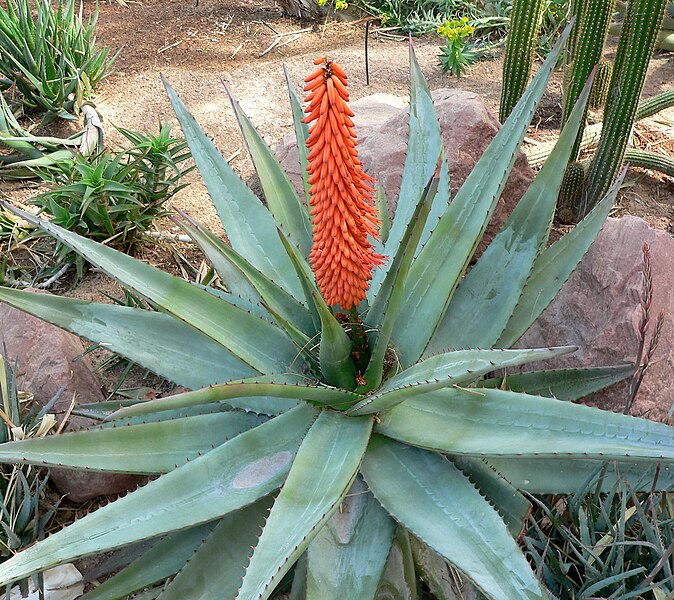
圖
http://commons.wikimedia.org/wiki/Aloe_ferox
Aloe dichotoma--Quiver tree ---Kokerboom
http://en.wikipedia.org/wiki/Aloe_dichotoma
Aloe dichotoma, also known as Quiver tree or Kokerboom, is a species of aloe indigenous to Southern Africa, specifically in the Northern Cape region, and Namibia. A good example of a quiver tree forest is to be seen on the road from Nieuwoudtville to Loeriesfontein. Modeling of Aloe dichotoma in South Africa and Namibia has contributed to understanding of protected area needs in response to climate change. Known as Choje to the indigenous San people, the Quiver tree gets its name from the San practice of hollowing out the tubular branches of Aloe dichotoma to form quivers for their arrows. Modelled range declines in this species due to climate change have recently been confirmed by field surveys (Wendy Foden et al., 2007).
Aloe dichotoma is cultivated in the southwestern United States for use in landscaping. The slow growth rate and relative rarity of the plant make it a particularly expensive specimen.
Aloe dichotoma in Phoenix
http://en.wikipedia.org/wiki/File:Aloe_ ... hoenix.jpg

http://en.wikipedia.org/wiki/File:Aloe_ ... 2009-2.jpg

圖
http://commons.wikimedia.org/wiki/Aloe_dichotoma
Lesser Doublecollared Sun Bird in Flowers of Quiver tree.
Nectarinia chalybea in flowers of Aloe dichotoma
http://commons.wikimedia.org/wiki/File: ... hotoma.JPG

http://commons.wikimedia.org/wiki/File: ... est_02.JPG

Aloe dichotoma quiver tree

http://commons.wikimedia.org/wiki/File: ... sunset.jpg

Aloe africana
http://commons.wikimedia.org/wiki/Aloe_africana
http://commons.wikimedia.org/wiki/File: ... cana_1.jpg

Aloe arborescens
http://en.wikipedia.org/wiki/Aloe_arborescens
Aloe arborescens Mill. is a species in the genus Aloe. It is the only other member of the Aloe family that is claimed to be as effective as Aloe Vera for medical uses.[citation needed].
學名Aloe arborescens「木立ち」---used in healthcare
http://en.wikipedia.org/wiki/File:Aloe_arborescens.jpg

圖
http://commons.wikimedia.org/wiki/Aloe_arborescens
http://ja.wikipedia.org/wiki/%E3%83%95% ... ompton.JPG

Aloe aristata----Torch Plant, Lace Aloe
Aloe aristata, also known as Torch Plant and Lace Aloe, is a species of aloe indigenous to South Africa and surrounding countries. It is stemless, sawtoothed and succulent. Its nectar-rich flowers tend to attract birds, bees, and wasps easily.
When not in bloom, it is similar to and often confused with Haworthia fasciata.
http://en.wikipedia.org/wiki/Aloe_aristata
http://en.wikipedia.org/wiki/File:AloeAristata.jpg

http://en.wikipedia.org/wiki/File:Aloe_aristata.jpg
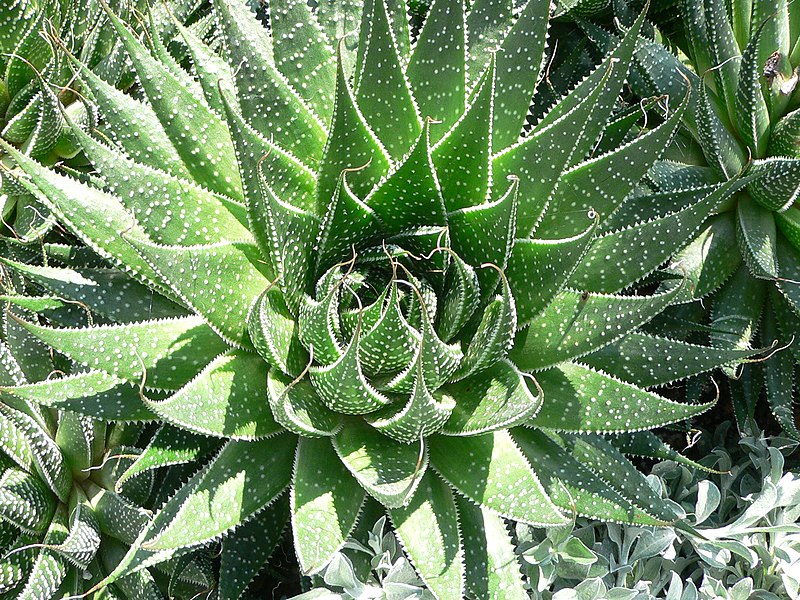
http://en.wikipedia.org/wiki/Haworthia_fasciata
圖
http://en.wikipedia.org/wiki/File:Hawor ... sciata.jpg

線條蘆薈--Aloe striata
http://zh.wikipedia.org/zh-tw/%E7%B7%9A ... 6%E8%96%88
(學名:Aloe striata),亦稱珊瑚蘆薈、銀芳錦[1] ,為多年生草本肉質的小型無莖蘆薈,南非特有種。葉片寬闊,肉質,呈青綠色,葉緣無鋸齒狀且帶有粉色,花序簇生,花筒為橘紅色。[2][3]
Aloe striata
http://zh.wikipedia.org/zh-tw/File:Aloe_striata.jpg

http://zh.wikipedia.org/zh-tw/File:Aloe ... 01_ies.jpg
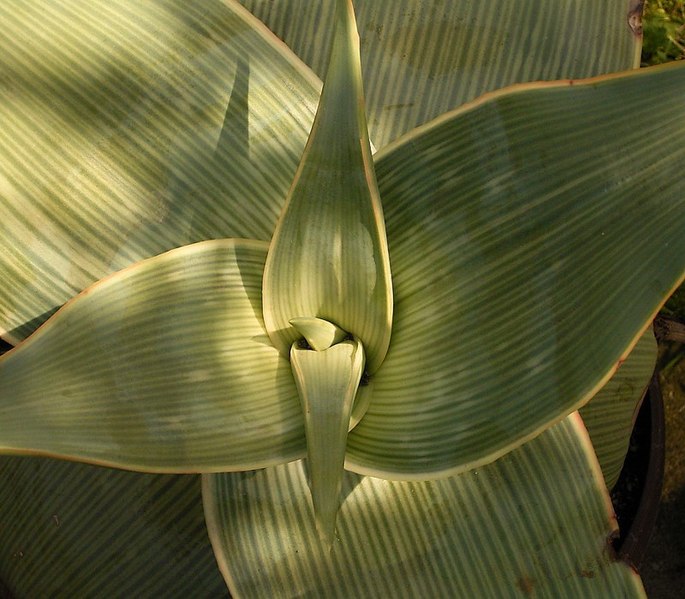
Aloe vossii
http://en.wikipedia.org/wiki/File:Aloe_ ... _(aka).jpg

Aloe barberae
(syn. Aloe bainesii), also known as Tree aloe, is a species of aloe native to South Africa.
http://en.wikipedia.org/wiki/Aloe_bainesii
http://en.wikipedia.org/wiki/File:Aloe_bainesii.JPG

圖
http://commons.wikimedia.org/wiki/Categ ... e_barberae
http://commons.wikimedia.org/wiki/File: ... lowers.JPG
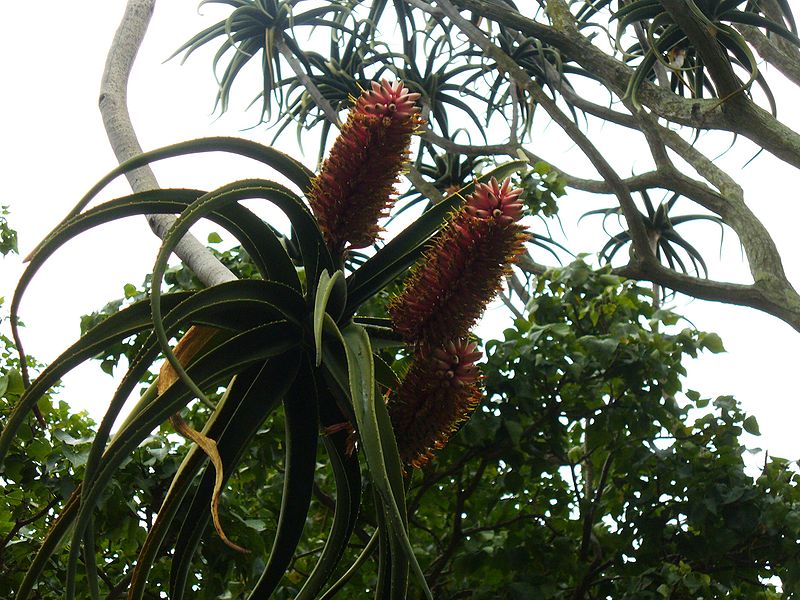
Aloe camperi
http://en.wikipedia.org/wiki/Aloe_camperi
http://en.wikipedia.org/wiki/File:Aloe_ ... Italy).JPG

圖
http://commons.wikimedia.org/wiki/Category:Aloe_camperi
http://commons.wikimedia.org/wiki/File:Aloecamperi.jpg

Aloe camperi var rugosquamosa
http://commons.wikimedia.org/wiki/File: ... mosa_1.jpg

http://commons.wikimedia.org/wiki/File: ... i1GEHU.jpg

Aloe capitata
http://en.wikipedia.org/wiki/Aloe_capitata
http://en.wikipedia.org/wiki/File:AloeCapitata.jpg

Aloe dorotheae
http://commons.wikimedia.org/wiki/File: ... heae_1.jpg

Aloe haworthioides
http://commons.wikimedia.org/wiki/File: ... ides_1.jpg

Aloe erinacea
http://en.wikipedia.org/wiki/Aloe_erinacea
Aloe erinacea is a species of plant in the Aloaceae family. It is endemic to Namibia. Its natural habitats are subtropical or tropical dry shrubland and rocky areas. It is threatened by habitat loss.
http://en.wikipedia.org/wiki/File:Aloe_erinaceae.jpg

.
Aloe helenae
It is endemic to Madagascar
http://en.wikipedia.org/wiki/Aloe_helenae
http://en.wikipedia.org/wiki/File:Aloe_helenae.JPG

Aloe hereroensis
Aloe hereroensis is an African Aloe native to Angola, Namibia and South Africa.[1]
http://en.wikipedia.org/wiki/Aloe_hereroensis
http://en.wikipedia.org/wiki/File:Aloe_ ... ob_C15.JPG

Aloe humilis
http://en.wikipedia.org/wiki/File:Aloe_humilis00.jpg

Aloe jacksonii
http://en.wikipedia.org/wiki/File:Aloe_ ... ington.jpg

Aloe laeta
http://en.wikipedia.org/wiki/File:Aloe_laeta.JPG
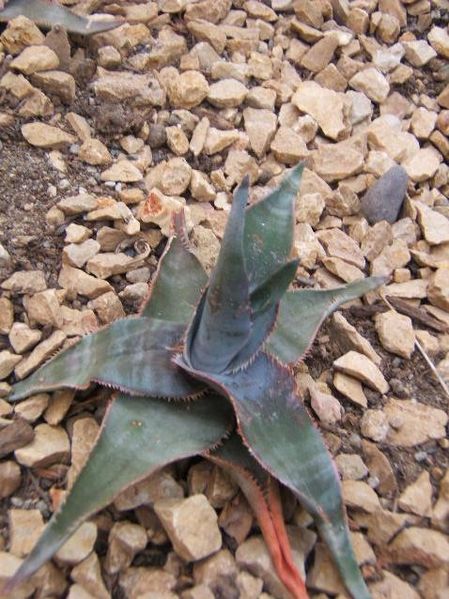
Aloe lateritia
http://en.wikipedia.org/wiki/File:Aloe_lateritia0.jpg
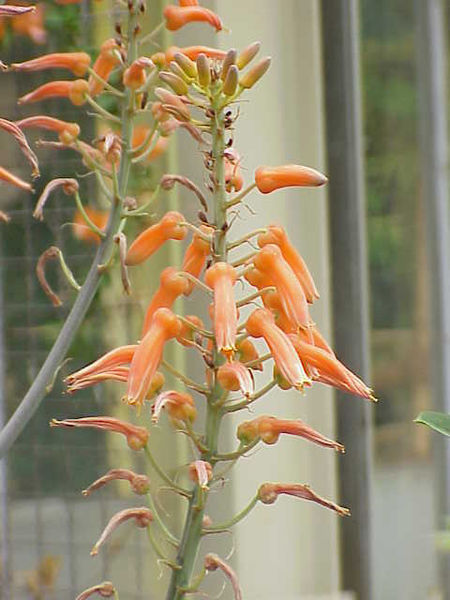
Aloe maculata
Aloe maculata, also known as Soap Aloe, Zebra Aloe or African Aloe, is an African species of aloe, and has poisonous seeds.
http://en.wikipedia.org/wiki/Aloe_maculata
http://en.wikipedia.org/wiki/File:Aloe_Saponaria.jpg

http://en.wikipedia.org/wiki/File:Aloe_ ... _05_21.jpg

http://en.wikipedia.org/wiki/File:Aloe_ ... a_JPG2.jpg

http://en.wikipedia.org/wiki/File:Aloe_saponaria_3.jpg

Aloe saponaria---syn.Aloe maculata
http://en.wikipedia.org/wiki/Aloe_saponaria
Aloe saponaria, also known as soap aloe, African aloe or zebra aloe, is a Southern African species of aloe. It is native in eastern South Africa, Botswana and Zimbabwe. [2]
A. saponaria has irritating sap, and should not be confused with Aloe vera. [3] The species name comes from the Latin sapo for soap; sap from the succulent leaves makes a sudsy foam in water, and can be used as a soap substitute. [1]
http://en.wikipedia.org/wiki/File:Aloe_ ... naria3.jpg

http://en.wikipedia.org/wiki/File:Aloe_saponaria_2.jpg

Aloe mitriformis
http://commons.wikimedia.org/wiki/Aloe_mitriformis
http://commons.wikimedia.org/wiki/File: ... is-Top.JPG

http://commons.wikimedia.org/wiki/File: ... rmis_2.jpg

Aloe mutabilis
http://en.wikipedia.org/wiki/File:Aloe_mutabilis00.JPG

Aloe marlothii
http://en.wikipedia.org/wiki/Aloe_marlothii
http://en.wikipedia.org/wiki/File:Aloe_marlothii01.jpg

http://en.wikipedia.org/wiki/File:Aloe_ ... Garden.jpg

http://en.wikipedia.org/wiki/File:Aloe_marlothii4.jpg

Aloe nyeriensis
http://en.wikipedia.org/wiki/Aloe_nyeriensis
Aloe nyeriensis is a succulent aloe plant species, endemic to Kenya.
http://en.wikipedia.org/wiki/File:Aloe_ngobitensis1.jpg

Aloe parvula
http://en.wikipedia.org/wiki/File:Aloe_parvula.JPG
Aloe peglerae
http://en.wikipedia.org/wiki/Aloe_peglerae
http://en.wikipedia.org/wiki/File:Aloe_peglerae01.jpg

http://en.wikipedia.org/wiki/File:Aloe_peglerae00.jpg

http://en.wikipedia.org/wiki/File:Aloe_ ... ose-up.jpg

http://en.wikipedia.org/wiki/File:Aloe_peglerae02.jpg

Aloe polyphylla
http://en.wikipedia.org/wiki/Aloe_polyphylla
http://en.wikipedia.org/wiki/File:Aloe_polyphylla.jpg

http://commons.wikimedia.org/wiki/Aloe_polyphylla
http://commons.wikimedia.org/wiki/File: ... ylla_2.jpg

http://commons.wikimedia.org/wiki/File: ... ylla_3.jpg
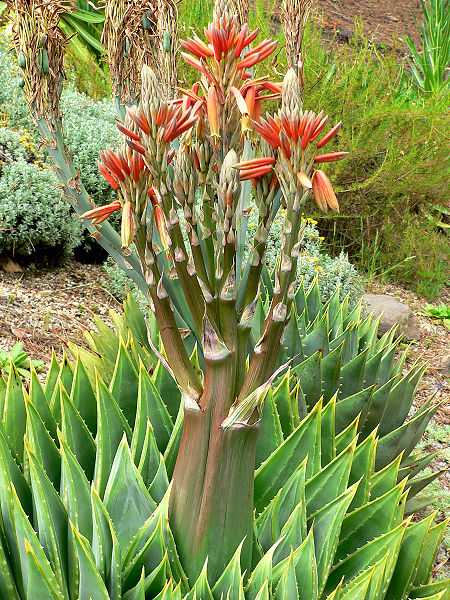
http://commons.wikimedia.org/wiki/File: ... ylla_4.jpg

Aloe reynoldsii
http://commons.wikimedia.org/wiki/File: ... oldsii.jpg

http://commons.wikimedia.org/wiki/File: ... ce)_01.JPG

Aloe rupestris
http://en.wikipedia.org/wiki/File:Aloe_rupestris.jpg

Aloe sinkatana
Aloe sinkatana is a small, stemless Aloe native to Sudan
http://en.wikipedia.org/wiki/Aloe_sinkatana
http://en.wikipedia.org/wiki/File:Aloe_sinkatana_1.jpg
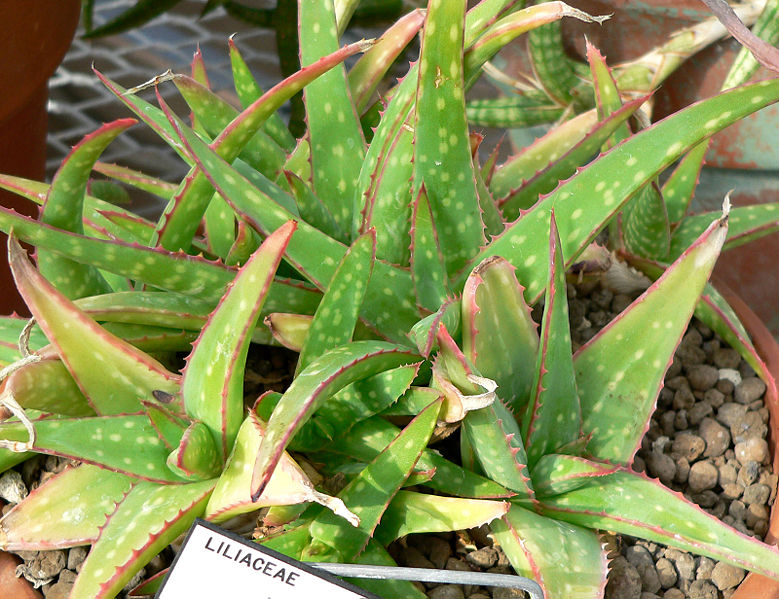
Aloe sophie
http://en.wikipedia.org/wiki/File:Aloe_ ... lowers.jpg

Aloe squarrosa
Aloe squarrosa is a species of plant in the Aloaceae family. It is endemic to Yemen. Its natural habitat is rocky areas.
http://en.wikipedia.org/wiki/Aloe_squarrosa
http://en.wikipedia.org/wiki/File:Aloe_ ... _front.jpg

http://commons.wikimedia.org/wiki/Aloe_squarrosa
http://commons.wikimedia.org/wiki/File: ... osa_up.jpg

Aloe striatula
http://en.wikipedia.org/wiki/File:Aloe_striatula_1.jpg

Aloe suzannae
Aloe suzannae is a species of plant in the Aloaceae family. It is endemic to Madagascar.
http://en.wikipedia.org/wiki/Aloe_suzannae
http://en.wikipedia.org/wiki/File:Starr ... zannae.jpg

Aloe Speciosa
http://en.wikipedia.org/wiki/File:AloeSpeciosa.jpg

Aloe variegata
Aloe variegata, also known as Tiger Aloe and Partridge-breasted Aloe, is a species of aloe indigenous to South Africa (Cape Provinces and Free State) and Namibia.
http://en.wikipedia.org/wiki/Aloe_variegata
http://en.wikipedia.org/wiki/File:Aloe_variegata0.jpg
http://en.wikipedia.org/wiki/File:Aloe_variegata_2.jpg

圖
http://commons.wikimedia.org/wiki/Aloe_variegata
http://commons.wikimedia.org/wiki/File: ... pero_1.jpg

